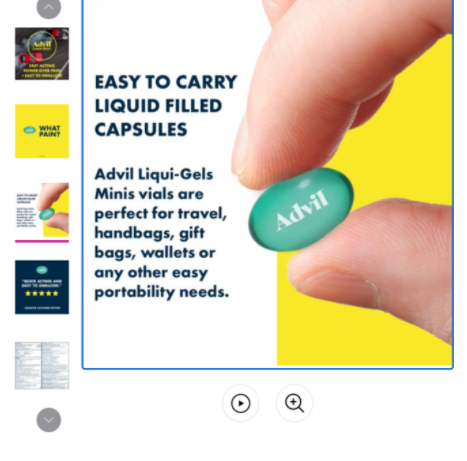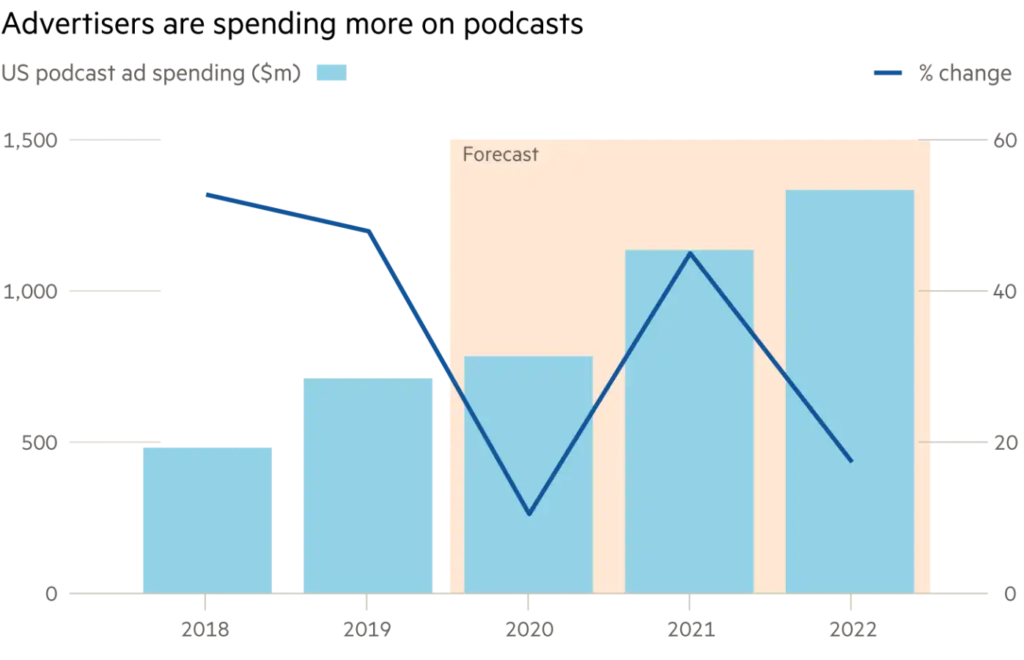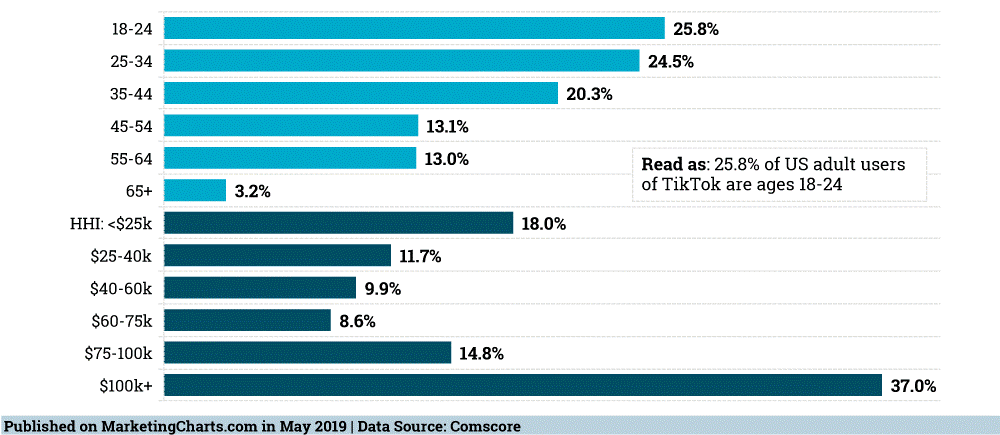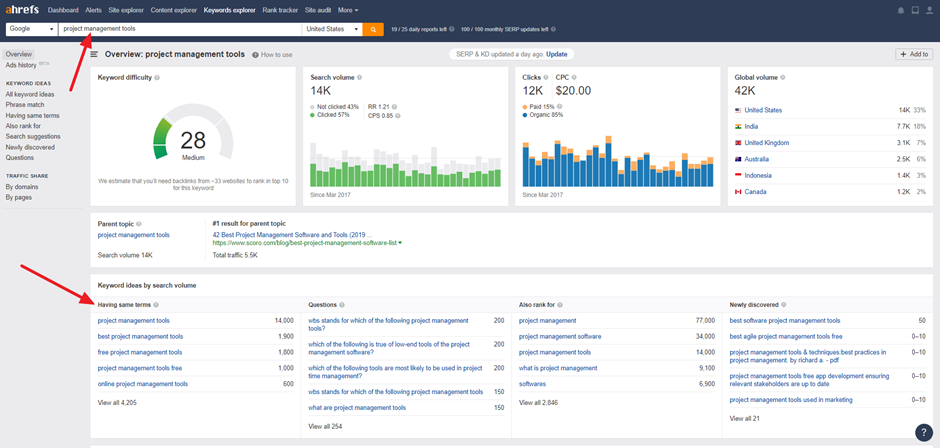As competition to digitize the grocery industry increases, Instacart is positioning itself as an ally in the Amazon age. Instacart is the North American leader in online grocery delivery with a marketplace spanning 25,000 brick and mortar stores across more than 5,500 cities in the US and Canada.
Every day, busy people and families use Instacart to explore the largest grocery catalog in the world, where they can discover new products and buy the brands they love from the retailers they trust.
Instacart has partnerships with some of the grocery stores it uses; store personnel at some stores do the shopping and Instacart handles only the delivery. But most grocery stores it uses just put up with Instacart’s workers coming in and shopping for clients.
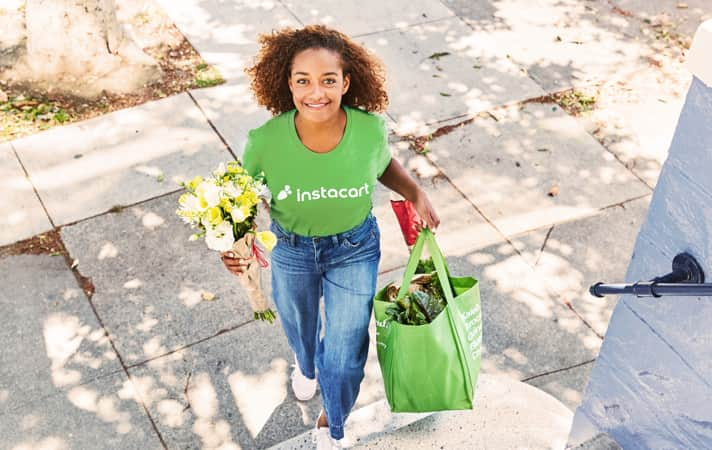
Source: Instacart
About Instacart Ads
Launched in May 2020, Instacart Advertising is a self-serve advertising platform enabling brands to increase sales and gain new customers through Featured Product ads. Here are some of the basics of Instacart’s advertising platform:
- A dashboard that includes reporting, creation, and campaign management features
- Ad inventory is based on a second-price auction system (winner pays $.01 more than the second-highest bidder)
- The flagship ad format is Featured Products which are keyword-based and currently exact-match only
- Ad campaigns are organized at the campaign and product group levels.
Relatedly, it is important to note that Instacart uses a second-price auction model similar to Amazon. This means that advertisers will pay $0.01 more than the next highest bidder for a keyword. This makes ramping up spend a lot easier, knowing that you can set high bids for your most important keywords without breaking your budget.
To understand how your bids compare to your competitors, Intacart provides a rating system for mid-to high-velocity keywords. The system has three metrics (green, yellow, and red) that indicate the probability of winning a certain percentage of placements given your current bid.
- Green: a high probability of winning 50% of placements
- Yellow: a high probability of winning 25% of placements
- Red: no chance of winning any placements
Usually, the system is updated in real-time based on the adjustments your competitors make to their bids.
Why Instacart Ads?
Instacart is fast becoming a household name across the U.S. as consumers look for a solution to buy groceries and goods from their local retailers. Brands that already sell grocery and CPG products in major retailers are leveraging Instacart to get ahead of the competition by capitalizing on the convenience that Instacart offers.
Here are some significant reasons why Instcart is assuming a preferred position in grocery eCommerce:
- Every one of the world’s top 25 consumer packaged goods (CPG) brands advertises in the Instacart marketplace to reach customers directly at the point of sale—from click, to cart, to checkout.
- Unmatched scale by easily and conveniently claiming prominent shelf space in the digital aisles of 350+ retailers and 25,000+ stores on their platform with one campaign.
- You get the result that matter from targeting a range of business goals that may include Sales growth, Category share, Awareness.

Source: Instacart
How Instacart Ad works
Choose your products
Choose what products to promote so they appear in prominent locations where customers are shopping. Get started here.
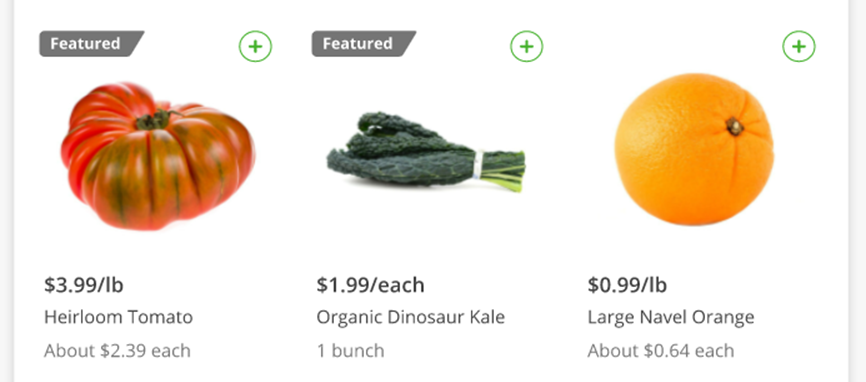
Source: Instacart
Pay for performance
Set a budget that works for your business and only pay when users engage with your products. Get started here.
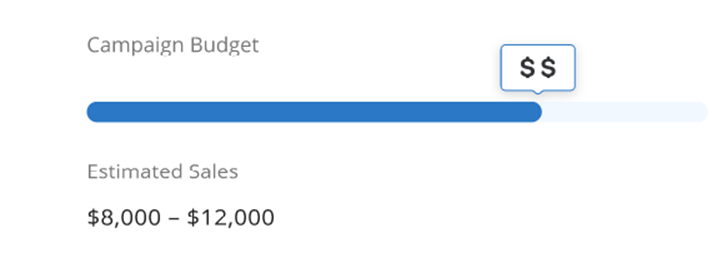
Source: Instacart
Learn what works
Once your campaign starts, review the results and optimize performance. Get started here.

Source: Instacart
How to set up an Instacart account
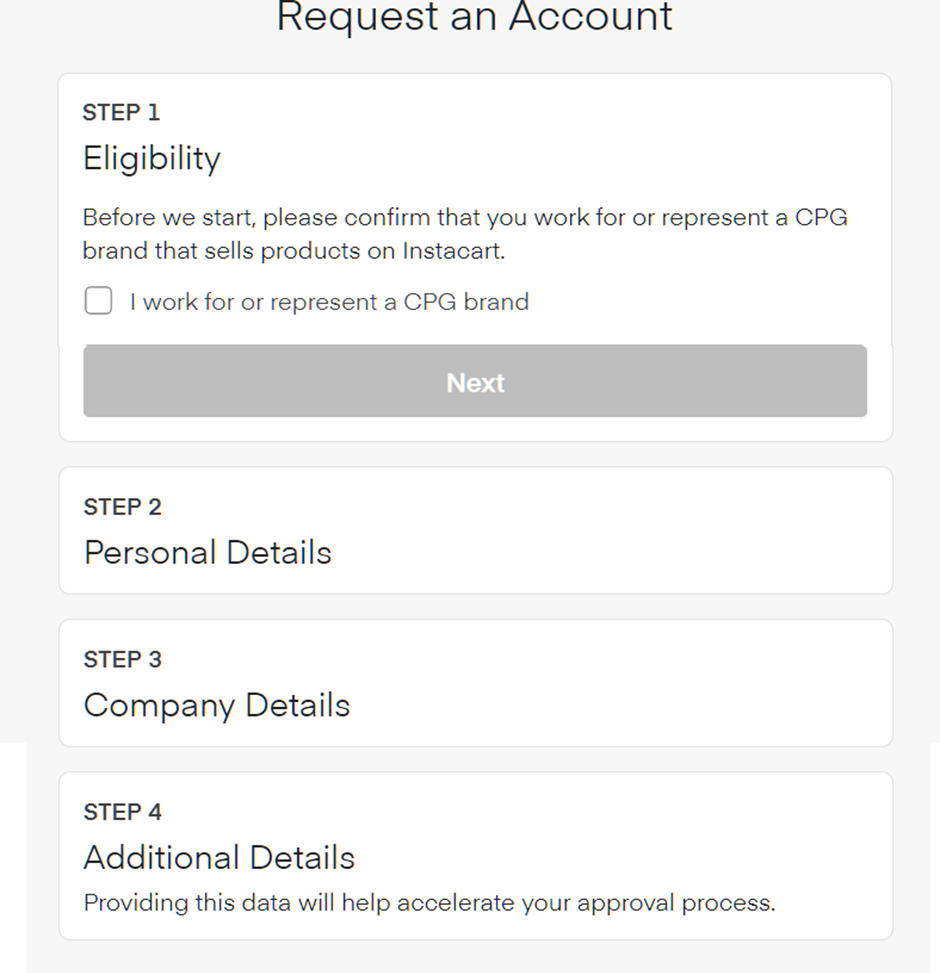
Source: Instacart
How Much Do Instacart Ads Cost?
While there is no definite cost attached to advertising on Instacart, paid search is a popular mode of calculating ad cost because it’s the strongest growth area (Instacart did not share specific year-over-year growth numbers), that’s according to Digiday.
Although Instacart said it declines to share rates publicly, for advertisers interested in the space, CPC rates typically stay under $3.00, according to a source who shared some CPC numbers. Instacart works with brands directly with CPC rates between $0.35-$1.50, depending on the category.
What is paid search on Instacart?
Paid search is a form of digital advertising where ads for relevant products and services are displayed alongside search results. On Instacart, paid search is incredibly powerful for brands of all sizes. There are many factors considered behind the scenes to determine when to display ads, or which ads to display for different searches, but they typically focus on how useful or related the ads are to the search term.
Paid search is a popular type of digital advertising because it gives the advertiser the opportunity to target their ad to people who are more likely to be interested in their product or service than a random shopper.
Compare paid search ads to a billboard on the side of a freeway. Lots of people are going to see the billboard, which is great, but what do you know about them? If it’s a product you sell, you can at least be sure it’s a product available for purchase in that area, but you don’t know if they’re looking for your product. Even a product with broad appeal, like soda drinks, there are going to be people driving by that billboard who don’t have soda drinks because of dietary restrictions, because they’re trying to eat healthily, or because their drink of choice is brewed drinks like beer and wines.
On the other hand, if your ad can reach just people who are searching for ‘home-made soda’ and other related keywords, and then you know the audience you’re targeting is much more likely to be interested in your product. Advertising on Instacart takes this relevance a step further. Because Instacart offers ad space on an e-commerce marketplace that consumers visit to shop from their favorite retailers, they can put ads right in front of the consumer directly at the point of purchase.
So while someone searching ‘home-made soda’ online could be searching for a bunch of reasons — they might be looking for recipes to make a homemade soda, for a soda drink store near them, among others — someone shopping on Instacart who searches for home-made soda is like someone in the grocery store heading directly to the home-made aisle, so they click to learn more.
How to Set Your Budget
At the time of writing this article, Instacart doesn’t support daily budget pacing. The features will be added soon, but for now, you have to do a bit of a workaround to set your monthly budget. However, you can start by setting the end date for a campaign to the end of a given month. Once that date arrives, you can extend the end date to the end of the following month and increase the total campaign budget by your allocated budget.
Conclusion
While several factors contribute to the cost of advertising on Instacart, most of the paid search ads you might be familiar with, like on other eCommerce marketplaces, use pay-per-click (PPC) and cost-per-click (CPC) model. Advertisers usually prefer this option because they are not charged each time a consumer sees their ad, only when they click on it.
Therefore, advertising with Instacart helps your products get in front of consumers when they’re searching for products like yours on the Instacart Marketplace. For more information and to get started, visit here.

